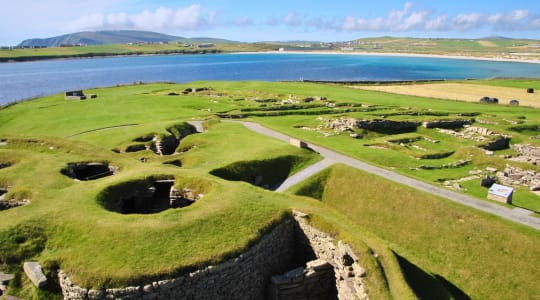
Jarlshof is an archaeological site located on the southern tip of the Shetland Islands in Scotland. It is one of the most important and well-preserved prehistoric and Norse settlements in Britain. The site covers over 4 hectares and contains the remains of more than 4,000 years of human settlement, including Bronze Age houses, Iron Age brochs, Viking longhouses, and a medieval farmhouse.
Jarlshof was first discovered in the late 19th century and was excavated over several decades, revealing a complex and fascinating history of human occupation. The site was likely inhabited from around 2500 BC, with the earliest structures being Neolithic or Bronze Age in origin. These were followed by Iron Age brochs, which were tall, round towers with walls up to 5 meters thick. The brochs at Jarlshof were among the largest and most complex in Scotland.
The Norse arrived at Jarlshof in the 9th century AD, and it became an important center for Viking trade and culture. The Norse structures at Jarlshof include longhouses, which were large, rectangular buildings with turf or thatch roofs and central hearths. These were used for living, working, and socializing. The Norse also built a wheelhouse at Jarlshof, which was a circular building with internal partitions that was likely used for ritual purposes.
The site continued to be inhabited into the medieval period, with a farmhouse being built on the site in the 1500s. Today, visitors to Jarlshof can explore the extensive remains of these ancient settlements and learn about the fascinating history of human occupation on the Shetland Islands.
Explore Near Jarlshof
Discover 1 airport within 75km. Perfect for planning day trips, finding connecting flights, or discovering new destinations to explore during your visit.
Airports Near Jarlshof
1 destination within 1.1km from your location
Cross-Border Adventures Near Jarlshof
Discover cross-border adventures near Jarlshof. Explore neighboring countries with similar attractions and extend your travel experience across borders.
